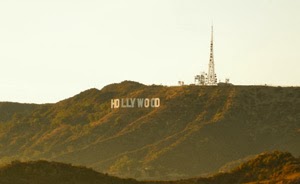The next unit that we are doing at the moment is modernising into aspects of film and television.
our shakespeare pieces and doing it to camera (film). We have started looking
We were lectured by Alex on Film and Television. He talked about different shots for. film
For example:
Extreme Shots -
This is a very close shot showing the detail of an object or the physical features of a person.

Long Shot - this category includes the full shot showing the entire human body, with head near the top of the frame and the feet near the bottom. While the focus is on characters, plenty of of the background details still emerges.
Medium Shot -This shot contains a figure from the knees/waist up and it is normally used for scenes with dialogue in it, or it is also used to show some detail of action. This could be two shots ( has two persons from the waist up) and three shots (containing three persons). But any more than three persons in a shot is known as a long shot.
Also included in this category is the over-the-shoulder shot.
Close-up - This shows very little background and it focuses on either the face or a specific part of a scene. Everything else in the background id blurred. The close-ups takes us into the mind of a character.
Extreme Close-ups - This version of the close-up generally show beyond what the normal eye would go through in real life. Extreme close-ups mostly shows the mouth or eyes, with nothing in the background. This shot is mainly used for dramatic effect.
Also in film and televsion, different camera angles are used.
the Bird's-Eye view
CAMERA ANGLES
This shows a scene from directly overhead. This angle is very unnatural and strange angle. This shot puts the audience in a godlike position, looking down on the action. People can be made to look in many different ways, for example, ant-like.
2. High Angle
This view is not as extreme as the Bird's eye view. They raise the camera above the action using a crane to give a general overview. The object or character often gets swallowed up by their setting.
3. Eye Level
This shot is fairly neutral. The camera is placed as though it is a human actually observing a scene so that actors heads are on a level with focus. The cam,era is placed approximately five to six feet from the ground.
4. Low Angle
Low angles help give a sense of confusion to a viewer, of powerlessness within the action of a scene. The background of a low angle shot tend to be just sky or ceiling,
5. Oblique/Canted Angle
Sometimes the camera is tilted to suggest imbalance, transition and instability. This technique is used to suggest point of view shots.
CAMERA MOVEMENT
A director might choose to move the action along by telling the story as a series of cuts, going from one shot to another, or they might just decide to move the camera with the action. Moving the camera takes a great a deal of time and this makes the action seem much slower, as it takes many seconds for a moving camera shot to be effective, bwhen the same information may be placed on screen in a series of fast cuts. The style must not only be a chosen movement, but the method of moving the camera must also be selected. There are seven basic methods:
1. Pans
This is a movement which scans a scene horizontally. The camera is placed on a tripod, which operates as a stationary axis point as the camera is turned, often to follow a moving abject which is kept in the middle of the frame.
2. Tilts
A movement which scans a scene vertically, otherwise similar to the span.
3. Dolly Shots
Sometimes called trucking or tracking shots. They place the camera is placed on a moving vehicle and it moves along side what is going on, following a moving figure or object.
Dolly shots that are complicated will involve a track laid down on the set for the camera to follow. The camera might be placed on a car, plane, or even a shopping trolley.
4. Crane Shots
Crane Shots are dolly-shots-in-the-air. A crane is a very useful way to move a camera. It can be move up, down, left, right, swooping in on action or moving diagonally out of it. The camera operator and camera are both balanced by a heavy weight and trust their safety to a skilled crane operator.
A crane in use, following the path of a balloon floating into the sky
5. Zoom Lenses
A zoom lens contains a mechanism that changes the magnification of an image.On a still camera, this means that the photographer can get a close up shot while still having distance from the object. A lens with a video zoom can change the position of where the audience is, either very fast, using a smash zoom or slowly without moving the camera. This saves a lot of time and trouble.
6. The Aerial Shot
This is an exciting variation of a crane shot, which is usually taken from an helicopter. This is often used at the start of a movie to establish setting and the movement. The helicopter is like a flexible kind of crane because it moves everywhere, can keep up with everything,can move in and out of a scene and can show real drama and exhilaration.
These are different types of shots and angles established in TV and Film.



